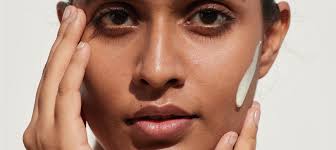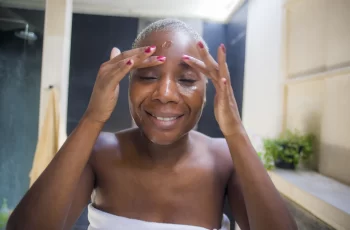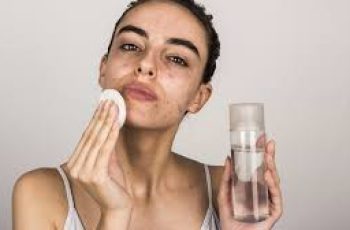
Which Strength of Retinol Do You Need? A Complete Guide for Every Skin Type
Retinol is widely recognized as one of the most effective ingredients in skincare. It has a well-earned reputation for targeting multiple signs of aging while improving the skin’s overall appearance.
From reducing fine lines and wrinkles to fading pigmentation and improving texture, retinol can be transformative.
However, its power comes with a learning curve, especially when it comes to choosing the right strength.
Different concentrations of retinol are available in the market. Some are ideal for beginners, while others are better suited for those with more retinol experience.
In this guide, we’ll explore how to determine the right strength of retinol for your skin, how to introduce it safely into your skincare routine, and what results you can expect at each stage.
Understanding Retinol and Its Benefits
Retinol, a derivative of vitamin A, encourages cell turnover and collagen production. These two processes are essential in keeping the skin youthful, firm, and healthy.
As a result, regular use of retinol can visibly reduce the signs of aging, improve skin texture, clear clogged pores, and even reduce acne breakouts.
It also helps brighten dull skin and fade hyperpigmentation, making it a versatile solution for many common skin concerns.
But not all retinol products are created equal. Concentration levels vary, and so do individual skin types. That’s why it’s important to choose the right strength for your unique needs.
How Much Retinol Is Right for You?
Determining the correct retinol strength depends on several factors. Your skin type, sensitivity, and primary skin concerns should guide your decision.
Retinol typically comes in concentrations ranging from as low as 0.01% to as high as 1% or more. Higher concentrations do not always mean better results, especially in the beginning.
For first-time users, starting with a low concentration is essential. This allows your skin to build tolerance and reduces the risk of irritation.
Jumping straight into high-strength retinol can cause dryness, redness, flaking, and even peeling, especially on sensitive or unprepared skin.
How to Introduce Retinol Into Your Routine Safely
If you are new to retinol, follow this gradual introduction method:
Step 1: Begin with a low-strength retinol. Start using it once a week in your nighttime skincare routine.
Step 2: After one or two weeks, if no irritation occurs, increase usage to twice a week.
Step 3: Once your skin adjusts, increase to every other night.
Step 4: Eventually, work up to nightly use if your skin remains calm and unreactive.
Only when your skin is comfortable using a specific strength of retinol nightly should you consider moving up to a higher concentration.
Repeat the gradual process for each new strength to avoid unwanted reactions and maximize the benefits over time.
Pairing retinol with nourishing and hydrating ingredients like hyaluronic acid, niacinamide, and peptides can help reduce sensitivity.
Also, avoid using it on damp skin, as this can increase absorption and potentially cause irritation.
Why Sunscreen Is Non-Negotiable With Retinol Use
One of the most important rules when using retinol is consistent daily sunscreen use. Retinol can make your skin more sensitive to UV rays, even if you’re only using it at night.
Always apply a broad-spectrum SPF 30 or higher every morning, even on cloudy or rainy days. UVA rays can penetrate through clouds and windows, causing skin damage year-round.
Neglecting SPF can undo the benefits of retinol and even worsen pigmentation or sensitivity.
Low-Strength Retinol (0.01% to 0.03%) – Ideal for Beginners
If you are new to retinol or have sensitive or dry skin, start with low concentrations. Products with 0.01% to 0.03% retinol provide noticeable benefits without overwhelming your skin.
This entry-level strength helps your skin become familiar with retinol and starts delivering subtle improvements without harsh side effects.
Low-strength retinol combined with antioxidants, alpha hydroxy acids (AHAs), and beta hydroxy acids (BHAs) can be incredibly effective.
These added ingredients help cleanse the skin and fight environmental stressors like pollution.
Over time, you may start noticing improvements such as:
Reduced visibility of pores
Smoother texture and reduced flakiness
Brighter and more even complexion
Fewer breakouts and blemishes
Fading of mild pigmentation
Softer fine lines and wrinkles
Even at low strengths, retinol can boost collagen and elastin production, improving firmness and elasticity in the skin.
Moderate-Strength Retinol (0.04% to 0.3%) – For Intermediate Users
After your skin has built up tolerance to low-strength retinol, you can consider moving up to moderate concentrations. These typically range from 0.04% to 0.3%.
Moderate-strength formulas are excellent for treating early signs of aging, stubborn pigmentation, and uneven skin texture. They can also help with persistent acne and dullness.
Transition to this strength slowly, using the same pattern as before—once a week, then twice, and eventually nightly as your skin adjusts.
Improvements from moderate-strength retinol usually become visible within 8 to 12 weeks of consistent use.
Some users may experience a brief period of dryness or flaking at first, which should resolve as the skin builds tolerance.
Don’t Forget the Eye Area
Many people are unaware that retinol can be used around the eyes. Specialized retinol creams designed for the eye area can help reduce fine lines, crow’s feet, and puffiness.
Use them carefully under the eyes and along the brow bone. Avoid applying them too close to the lash line to prevent irritation.
The delicate skin in this area can greatly benefit from improved collagen production, resulting in firmer, brighter under-eyes over time.
And no, retinol does not thin the skin. On the contrary, it strengthens and thickens the skin by encouraging collagen renewal.
High-Strength Retinol (0.5% to 1%) – For Advanced Users
High-strength retinol is very powerful and is typically reserved for those who have built strong skin tolerance. These formulas usually contain 0.5% to 1% retinol.
They are ideal for people with advanced signs of aging, sun damage, deep wrinkles, or acne scars that have not responded to lower concentrations.
If your skin tolerates moderate retinol without irritation, you may begin using a high-strength formula following the same gradual routine.
However, under no circumstances should you begin retinol use with a high concentration. Doing so will likely cause irritation, peeling, and discomfort.
Symptoms of misuse may include redness, stinging, burning, or flaking—signs your skin’s barrier has been compromised.
Can You Use Retinol With AHAs and BHAs?
Yes, you can use retinol with other active ingredients like AHAs (e.g., glycolic acid) and BHAs (e.g., salicylic acid), but not necessarily at the same time.
To reduce the risk of irritation, alternate their use. For example, use an AHA product in the morning and apply retinol in the evening.
Or use AHAs or BHAs on nights when you are not using retinol. This way, you can benefit from both ingredients without overloading your skin.
Introducing these ingredients slowly into your routine will help your skin adapt and avoid sensitivity or redness.
A Balanced Skincare Routine Enhances Retinol Results
For best results, combine retinol with a thoughtful and well-balanced skincare routine. Gentle cleansers, hydrating serums, moisturizers, and SPF are essential companions.
Layering calming ingredients such as ceramides, panthenol, and squalane can help support your skin barrier and minimize dryness.
Avoid using harsh scrubs or exfoliants while adjusting to retinol. Your skin is already renewing itself faster with retinol’s help.
Focus on giving your skin everything it needs to stay hydrated, calm, and protected while it renews from the inside out.
Final Thoughts: Slow and Steady Wins the Race
Retinol is not a quick fix, but with time and proper use, it offers transformative results. No matter your skin concern, there is a strength of retinol suited for you.
Start low, go slow, and be consistent. As your skin adapts, you’ll begin to see smoother texture, clearer tone, and fewer signs of aging.
The journey to better skin isn’t about speed—it’s about sustainability. Give your skin what it needs, and it will reward you.
And above all, never forget your sunscreen. Your future self will thank you!


